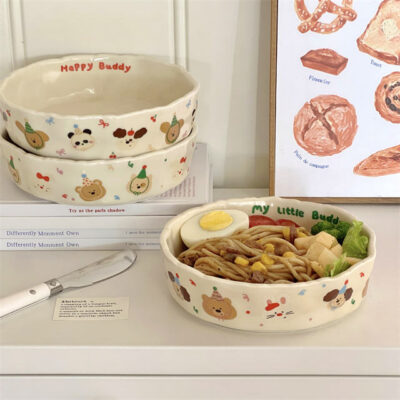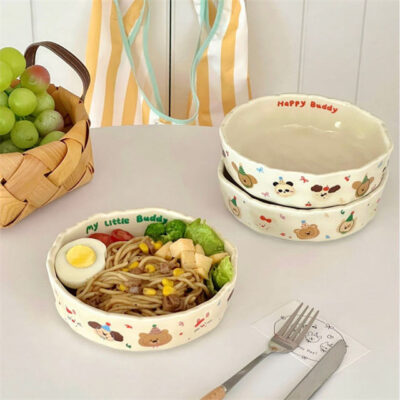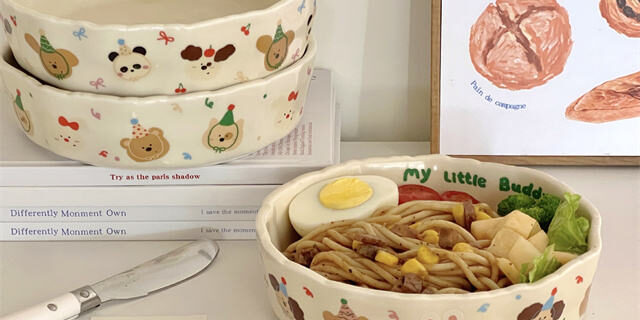Running a restaurant means every piece of tableware must balance functionality, durability, and presentation. Among the essentials, the ceramic ramen bowl is especially important in Asian dining concepts. A well-chosen bowl not only improves the customer’s dining experience but also helps kitchens run smoothly. In this article, we’ll look at the main criteria professional buyers should consider when sourcing ramen bowls.
1. Capacity and Portion Control
Restaurants serve noodles with varying amounts of broth, toppings, and garnishes. A standard ramen bowl should be 20–25 cm (8–10 inch) in diameter and deep enough to hold at least 700–1000 ml. This size ensures portions look generous without overflowing. Buyers should test bowls with real recipes before finalizing procurement.
2. Heat Resistance and Food Safety
Ceramic bowls must withstand high temperatures from boiling broth, dishwashers, and microwave reheating. Look for bowls that are certified lead-free and cadmium-free to ensure food safety compliance in international markets. A strong glaze prevents liquid absorption and resists chipping during heavy use.
3. Stacking and Storage Efficiency
In busy restaurants, space matters. Ramen bowls should stack neatly without wobbling. Stable stacking minimizes breakage in storage and improves back-of-house efficiency. Buyers should request stacking tests before committing to large orders.
4. Glaze Quality and Aesthetic Value
The dining experience is highly visual. A smooth glazed finish not only protects the bowl but also enhances the food’s presentation. Darker glazes highlight vibrant ramen toppings, while lighter shades create a clean, minimalist look. Consistent glazing also prevents quality complaints in retail channels.
5. Durability for High-Turn Kitchens
Restaurants can serve hundreds of meals per day, so bowls must handle constant washing and handling. Thick-walled ceramic bowls are less likely to chip, making them more cost-effective in the long run. Buyers should also check for reinforced rims that prevent cracks from frequent use.
6. Choosing Reliable Supply Partners
Beyond the product itself, the supplier’s reliability matters. Restaurants and distributors should partner with trusted industry sources. Many buyers consolidate their orders through Bowl Manufacturers, a platform that connects businesses to reliable producers with competitive pricing.
For specialized needs in Asian dining, sourcing directly from professional Ceramic Bowl Manufacturers ensures consistent quality, food-safe certification, and scalable production capacity.
Final Thoughts
Selecting the right ceramic ramen bowl involves more than aesthetics. Buyers must evaluate capacity, heat resistance, stacking ability, glaze quality, and durability to ensure long-term value. Working with experienced manufacturers reduces procurement risks and ensures timely delivery.
For restaurants and distributors looking to improve their tableware collections, investing in reliable ceramic ramen bowls is a decision that enhances both the customer dining experience and the efficiency of daily operations.


















